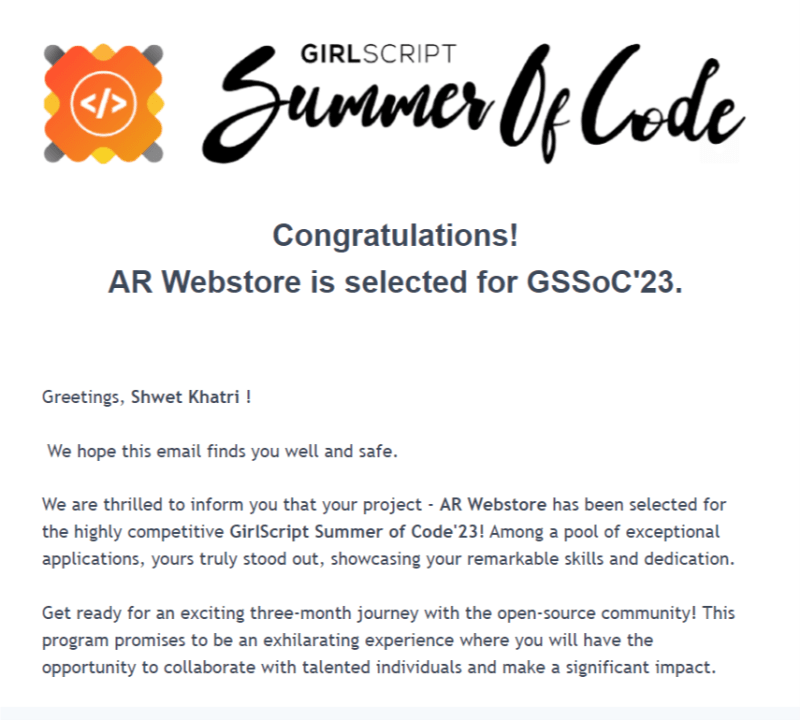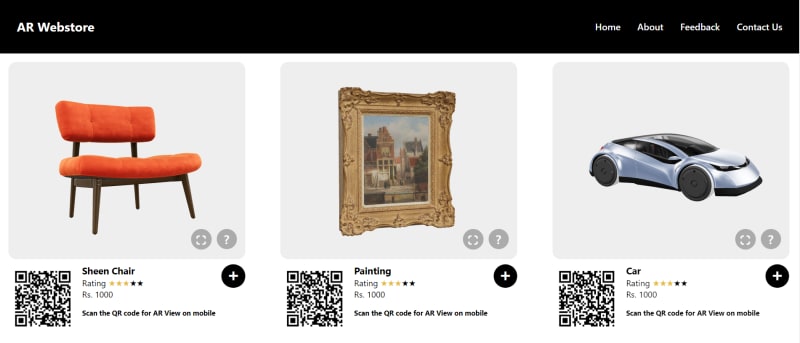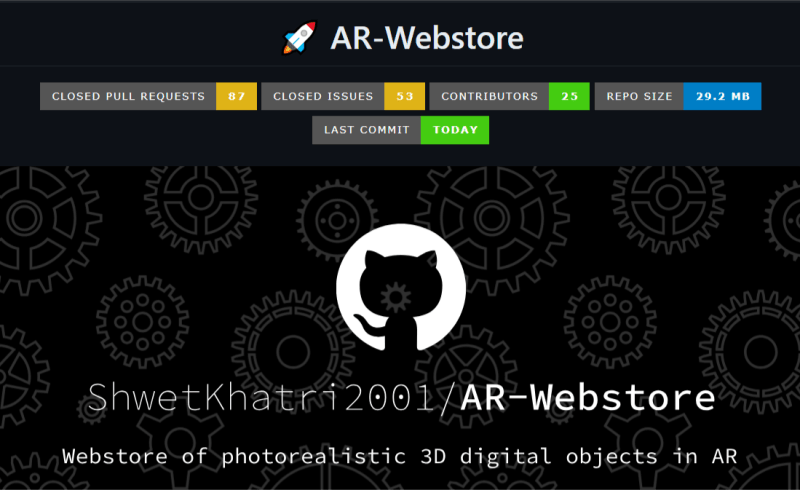Greetings! I’m Shwet Khatri, currently enrolled in a master’s program for Computer Science and Engineering at The LNM Institute of Information Technology in Jaipur, India. My passion lies in crafting innovative real-world solutions through full-stack web development, utilizing the latest technologies. Additionally, I’m an avid supporter of open-source initiatives and enjoy engaging in global collaborations to contribute to open-source software projects.
I’ve just wrapped up my role as a Project Admin in the GSSoC (GirlScript Summer of Code) for the summer of 2023. Encouraged by this enriching experience, I’ve made the decision to document my entire journey in a blog. This blog will encompass everything from the initial selection phase to the final culmination of the program. My objective with this blog is to share the valuable insights I’ve acquired and offer guidance on how you too can become part of this exceptional program.
So, What is Open-Source?
Open Source is all about people working together to create software and projects. It focuses on things like being open, easy to use, and coming up with new ideas as a group. In Open Source projects, the instructions that make the software work are available to everyone. This means anyone can look at them, change them, and share them. This helps build a friendly community where many different people can share their knowledge and ideas, making everyone feel like they’re part of a team and empowering them to do great things.
Now, What is the GirlScript Summer of Code?
The GirlScript Summer of Code is a three-month-long program that happens every summer, organized by the Girlscript Foundation. During these three months, participants work on various open-source projects under the close guidance of experienced mentors. This opportunity allows students to start contributing to real-world projects right from their own homes, gaining valuable experience and exposure in the process.
How does this program work?
The program kicks off in May, offering three different roles for participation: Contributors, Mentors, and Project Admins. Project Admins initiate the process by proposing their projects to attract open-source contributors. Following this, Mentors step in to guide these contributors in their work, collaborating closely with the Project Admins. Last but not least, we have contributors who actively engage in contributing to the projects of their choice during the dedicated contribution period.
In May, projects are selected for the program, and Mentors are matched with projects that align with their interests and skills. Contributors can then freely register for the program and begin their contributions, receiving guidance from both Mentors and Project Admins. One remarkable aspect of this program is its inclusivity, as there are no specific selection criteria for contributors. It’s open to everyone, welcoming beginners to join and learn.
Throughout the contribution period, program maintainers keep a Leaderboard, scoring contributors based on their merged pull requests across different projects. This encourages contributors to explore various projects, technologies, and ideas during the three-month program. At the program’s conclusion, top performers are rewarded with exciting prizes and swag items as a token of appreciation for their outstanding contributions.
How did I get selected?
Being a fan of open-source, I was already familiar with GSSoC. When I learned that it was taking place this summer, I promptly made up my mind to elevate my involvement by taking on the role of a Project Admin this year. At that point, I didn’t have a fully developed project, but I did possess a promising project idea and a clear vision of how I would collaborate with open-source contributors to bring it to life during GSSoC’23.
Following the specified requirements, I responded to a series of questions regarding my project, its vision, and my personal journey in the realm of open-source. Additionally, I diligently prepared and submitted a demo video. This video showcased the current state of my project, outlined the future objectives I aimed to accomplish, and highlighted how it could serve as a valuable learning experience for contributors interested in XR, offering them the chance to actively participate in an open-source project.
In just a matter of days, I received the exciting news that my project, AR-Webstore, had been chosen as one of the 100 projects participating in this year’s program. I was truly delighted and filled with anticipation as I embarked on this new chapter of my journey.
About the project
Traditional e-commerce platforms fail to deliver immersive product experiences, leaving customers uncertain about the look, fit, and functionality of items. This lack of visualization leads to higher return rates as products may not meet expectations. Additionally, customer engagement suffers due to the limited ability to interact with and explore products online.
AR-Webstore revolutionizes the shopping experience by seamlessly integrating augmented reality. With AR-Webstore, customers can visualize products in their own spaces and view all the virtual features more clearly. This empowers customers to make informed decisions, reduces return rates, and enhances engagement, resulting in a more satisfying and immersive shopping journey.
The future goals of AR-Webstore include building a complete end-to-end e-commerce platform that can provide an immersive online shopping experience. Also, Make the products interactive in a real environment using ML-AI rather than just demonstrating static 3D models.
My three months long journey …
My three-month journey has been quite the roller coaster ride. In my role as a project maintainer, I encountered various challenges along the way, but I was also able to swiftly identify and implement effective solutions for them. I highly recommend familiarizing yourself with these potential challenges in advance if you have plans to open-source or make one of your projects public.
Here are my suggestions:
Build your Team: Describe your project idea, the problem you’re solving, and the exposure contributors will get in-depth and share it on different social media platforms to get the best contributors aligned with your project.
Simple but solid tech stack: Keep the tech stack of the project easy to set up and something that most of the contributors already know. It will fascinate them to connect with your project better in the initial phase. For that, you should have good documentation for the new contributors who have no experience.
Divide and Rule: Divide your project's final outcome into small tasks and assign it to the contributors while providing the deadline for each task. Raise issues at regular intervals for those tasks with descriptive objectives.
Maintainability and Sustainability: Set up good DevOps for your project as well which automates the process of deployment. Deployment previews on PRs really help in reviewing PRs quickly.
Align the team with the project: Provide a good reason about everything like why you think the contributor’s approach is not good or why yours is better. It will help them align with the project’s objectives.
Ask, Mentor, and Repeat: Encourage the contributors who are really interested in contributing to your project for a longer period and have active communication with them about asking for their updates, solving their doubts, and reviewing their work. To achieve a better understanding of each other, you may conduct online biweekly / monthly meetings with your contributors.
Learn in Public: Have a common public channel for all the contributors where they can post their queries or updates and keep maintainers to resolve their queries on a daily basis.
These points proved instrumental in enabling both myself and the contributors to maximize the benefits of this program. As the program concluded after three months, I found that our project, which had transitioned from being solely mine to a collective effort, had yielded far more than I initially anticipated.
During the contribution period, AR-Webstore got 60+ Forks, 20+ Stars, and 50+ merged PRs. I’d recommend the readers of this blog try out our collective efforts Live Here and give it a start on GitHub.
Why should you definitely go for this program?
One of the most significant benefits of participating in this program (or other paid/non-paid open-source initiatives) is the opportunity to expand one’s connections and engage with the community. This opens doors to valuable networking prospects and provides access to helpful feedback, fostering personal and professional growth.
I chose to participate in this program with the goal of sharing the knowledge I’ve accumulated over the years and gaining insights into managing a project with a diverse group of contributors. The program exceeded my expectations, offering me valuable experiences beyond what I had initially anticipated.
I highly recommend that anyone who has previously been involved in programs like GSSoC or similar initiatives as a contributor should consider stepping into roles like mentorship or project administration. Doing so will provide you with a deeper understanding of the responsibilities and challenges associated with being an open-source maintainer.
What’s Next?
While the GSSoC journey has concluded this year, the AR-Webstore’s journey is just beginning. My aspiration is to elevate it to new heights by creating a groundbreaking e-commerce product. I aim to extend this project to other open-source programs to attract highly skilled developers. This endeavor will not only foster a community of individuals keen on mastering XR through open-source solutions but also allow me to contribute my utmost to the growth and prosperity of this community.
Conclusion
After three months, time has flown by swiftly. I didn’t want this program to conclude, but as the saying goes, all good things must eventually come to an end.
I’ve been genuinely amazed by the warm and supportive community I encountered during GSSoC. The program has been consistently supporting new contributors, and this year has been a delightful experience for me. I even had the opportunity to mentor these contributors and share my own experiences. I’m eagerly looking forward to remaining an active and engaged part of this community indefinitely.
Adios
Thank you for reading this far! I hope you found this blog informative and gained valuable insights into the details of the GirlScript Summer of Code Program. Sharing knowledge and experiences is a great way to foster collaboration and learning in the tech community. Best of luck with your future endeavors!
If you have any further questions about the program, open-source development, or technology in general, or if you’d like to see my work, please don’t hesitate to reach out to me on my social media accounts listed below:
Linkedin : https://www.linkedin.com/in/shwet-khatri
GitHub : https://github.com/ShwetKhatri2001
Twitter : https://twitter.com/shwetkhatri2001
Portfolio : https://shwetkhatri.netlify.app/
Till then, Keep Building 🚀, Keep Contributing 🙂






Top comments (1)
great